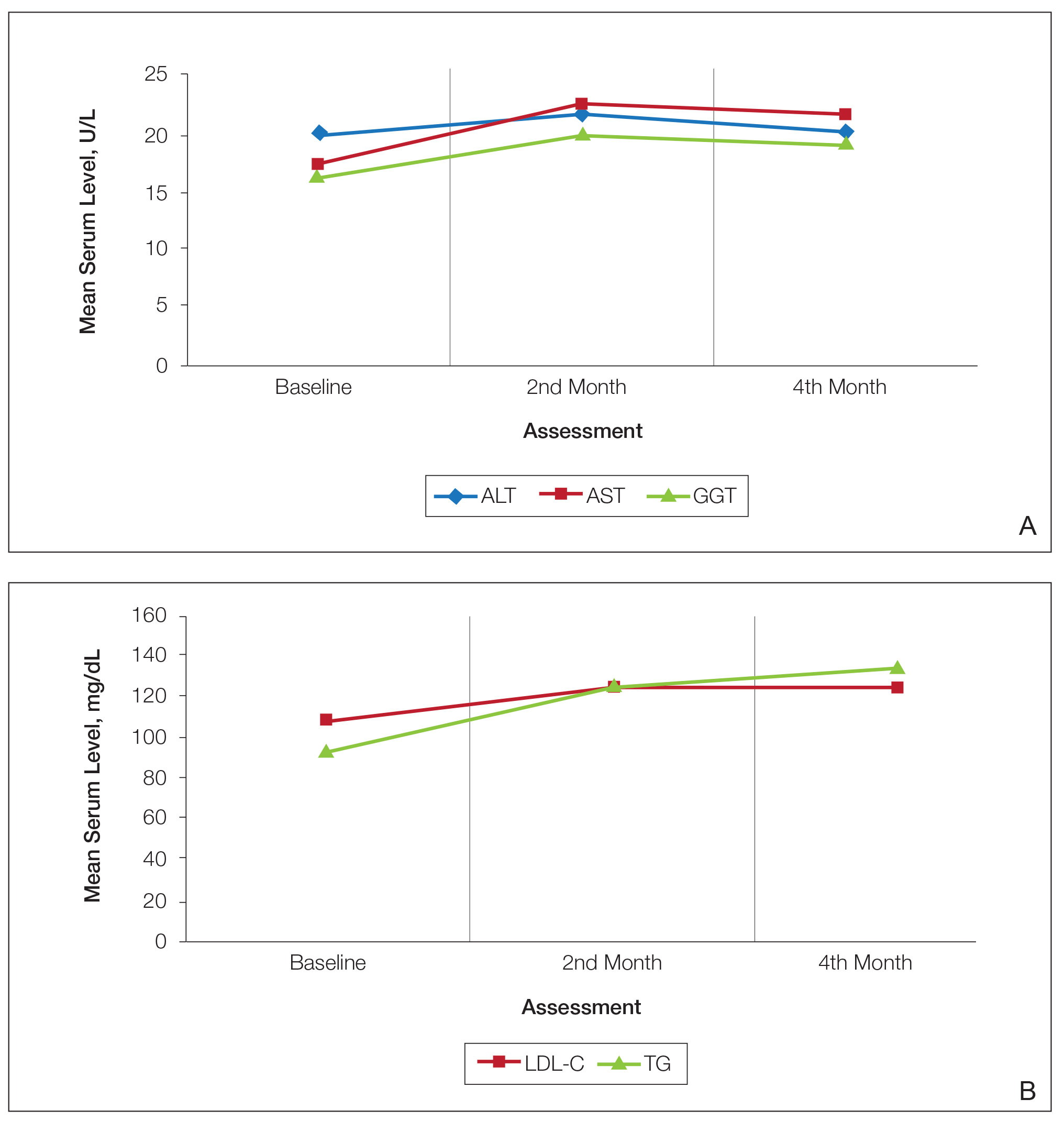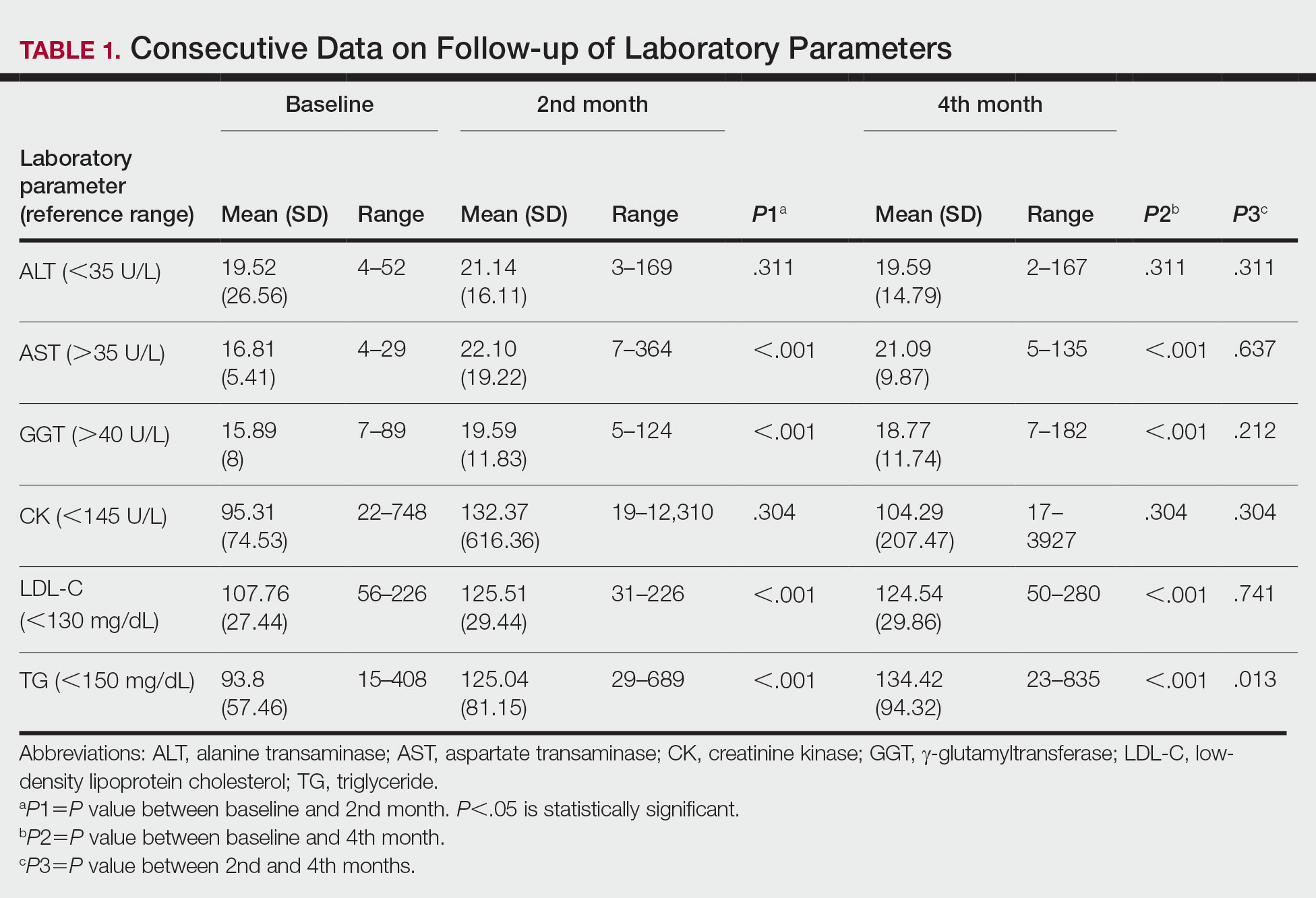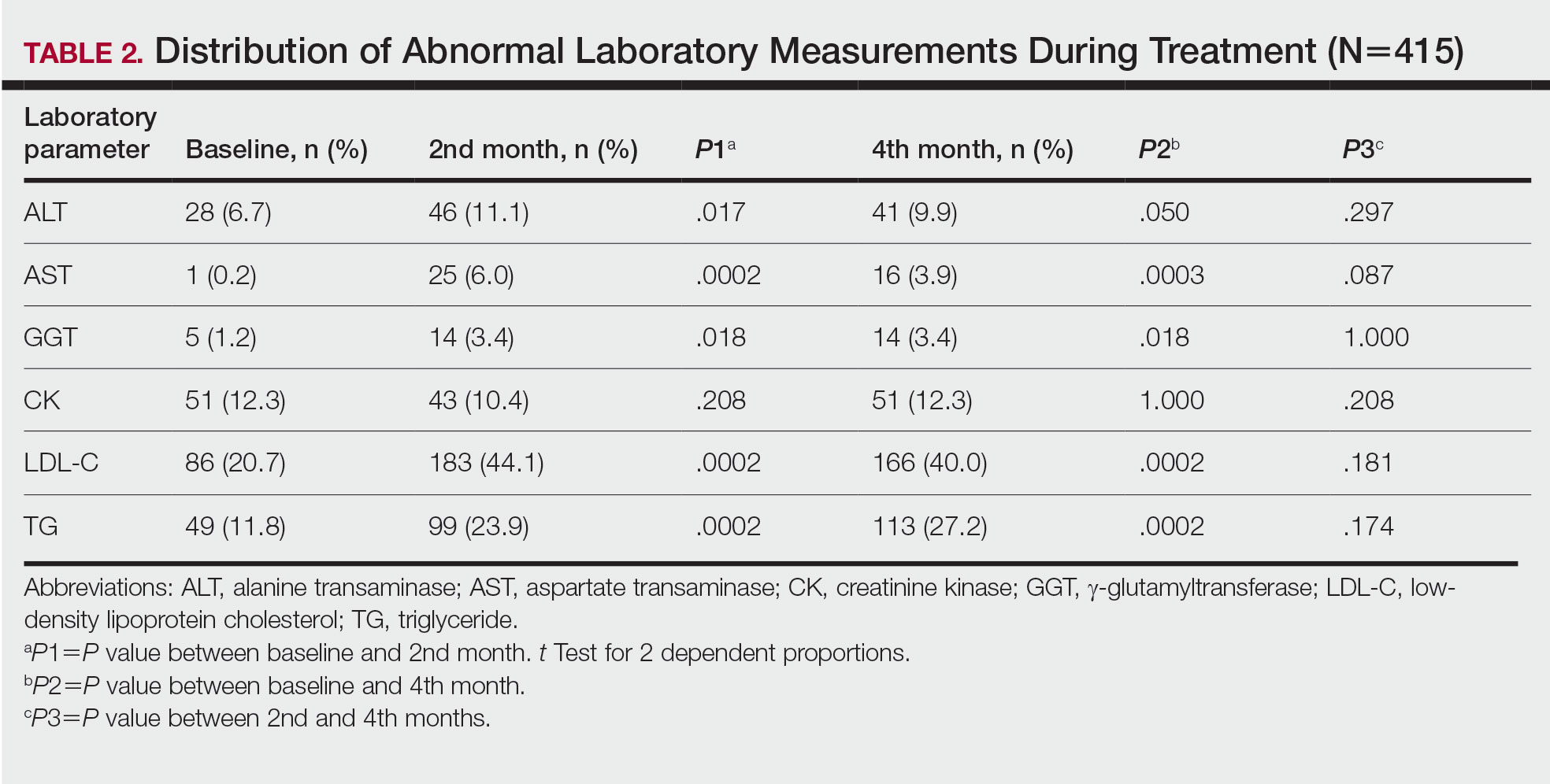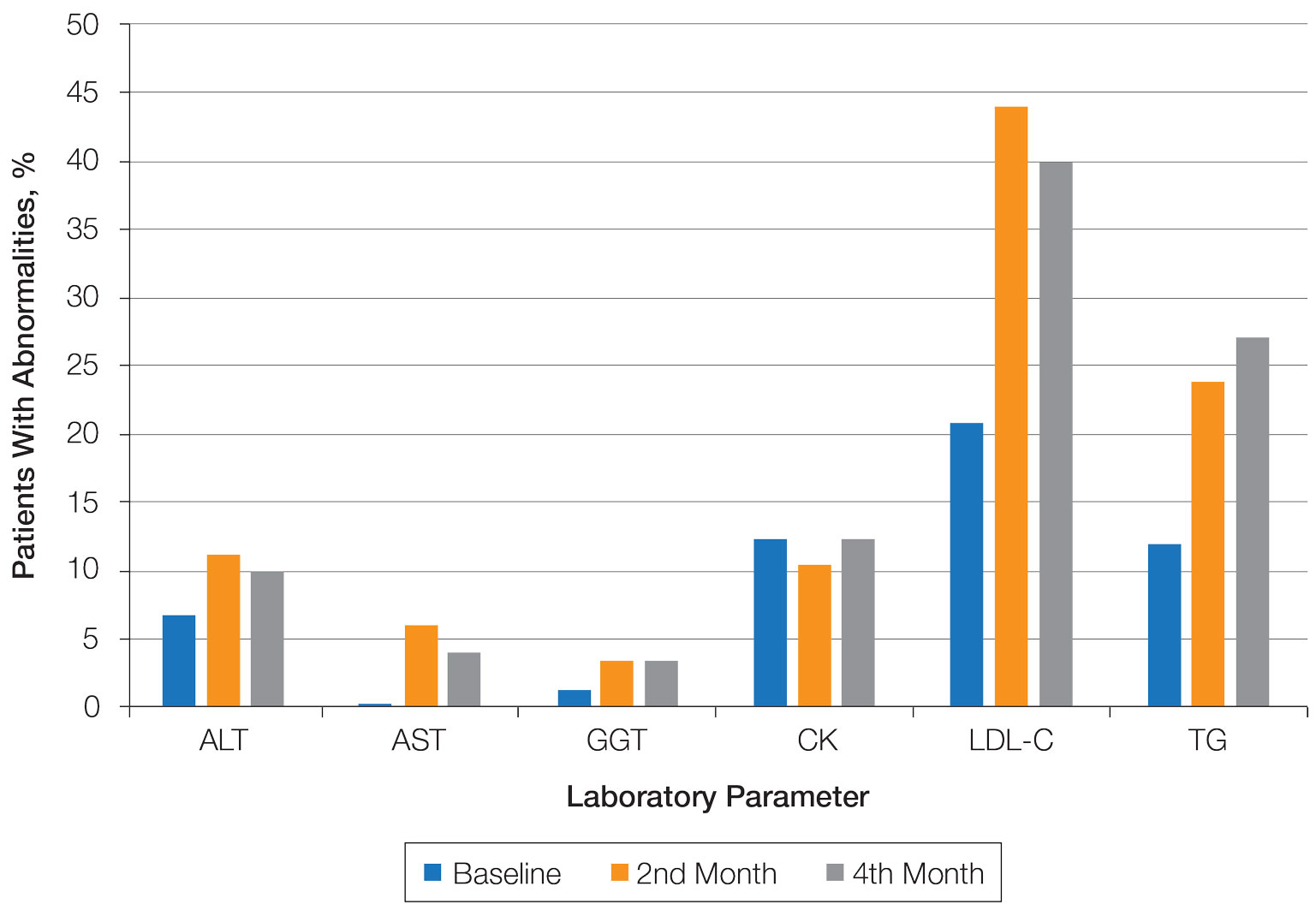Isotretinoin is used in the treatment of nodulocystic and severe papulopustular acne. During the treatment period, laboratory monitoring is recommended to identify the risk for complications such as hepatotoxicity, teratogenicity, rhabdomyolysis, hyperlipidemia, and pancreatitis.1 There is a lack of consensus of the frequency of follow-up of laboratory parameters during isotretinoin treatment. This study evaluated the changes in laboratory parameters used in daily practice for patients with acne who were treated with isotretinoin to determine the optimum test repetition frequency.
Materials and Methods
We conducted a retrospective study of data from patients who received oral isotretinoin therapy for acne between January 2021 and July 2022 via the electronic medical records at Konya Numune Hospital and Konya Private Medova Hospital (both in Konya, Turkey). Patients who received an oral isotretinoin total cumulative dose greater than 120 mg/kg were included in the study. Patient demographic data; cumulative isotretinoin doses; and alanine transaminase (ALT), aspartate transaminase (AST), γ-glutamyltransferase (GGT), creatinine kinase (CK), low-density lipoprotein cholesterol (LDL-C), and triglyceride (TG) levels during treatment were recorded. Baseline laboratory levels of those parameters were compared with levels of the same parameters from the second and fourth months of treatment. Comparisons for all parameters were made between the second- and fourth-month levels. Reference ranges are shown in Table 1. Abnormalities were graded according to the National Cancer Institute Common Terminology Criteria for Adverse Events v3.0 grading system.2 This study was approved by the Karatay University (Konya, Turkey) ethical committee.
Statistical Analysis—The descriptive statistics of the measurements were presented as means, standard deviations, or medians (first and third quartiles). With respect to the normal distribution, the consistency of the measurements was evaluated with the Kolmogorov-Smirnov test, and small deviations from the normal distribution were observed. Changes in laboratory measurements were evaluated with simple repeated-measures analysis of variance, and changes that differed significantly were determined by a Holm-Sidak post hoc test. Relationships between total cumulative doses and laboratory measurements at second visits were evaluated by the Pearson correlation analysis. The statistical significance level was P<.05. SPSS Statistics 23 (IBM) was used in the calculations.
Results
Consecutive Data at Baseline and Follow-up—A total of 415 patients with a mean age (SD) of 21.49 (7.25) years (range, 12–53 years) were included in our study. The mean total cumulative dose (SD) of the patients was 7267.27 (1878.4) mg. The consecutive data of the means of the laboratory parameters are shown in Table 1 and Figure 1. There was no significant change in the ALT levels between baseline and the fourth month as well as between the second- and fourth-month assessments (both P=.311). When comparing the differences among AST, GGT, and LDL-C measurements, the levels increased significantly between baseline and the second month and between baseline and the fourth month (all P<.001). There was no significant difference in CK levels at all assessments (all P=.304). When the differences between TG measurements were compared, the changes between baseline and the second month (P<.001), baseline and the fourth month (P<.001), and the second and fourth months (P=.013) were significant (Figure 1).

FIGURE 1. A, Changes in the mean alanine transaminase (ALT), aspartate transaminase (AST), and γ-glutamyltransferase (GGT) levels during the isotretinoin treatment period. B, Changes in the mean low-density lipoprotein cholesterol (LDL-C) and triglyceride (TG) levels during the isotretinoin treatment period.
Abnormal Laboratory Measurements—The distribution of abnormal laboratory measurements during treatment is shown in Table 2 and Figure 2. Grade 3 or higher elevations of liver transaminases (ALT, AST) and GGT were observed in fewer than 2% of patients during treatment compared with baseline (grade 3 elevations of ALT and AST together in 2 patients; grade 4 AST elevation in 1 patient; grade 3 elevations of ALT, AST, and GGT combined in 1 patient; isolated grade 3 GGT elevation in 1 patient). All of the patients who developed grade 3 liver transaminases and isolated grade 3 GGT elevation had improved values when these were rechecked within 2 weeks.
In the patient who developed hepatotoxicity in the second month, the ALT level rose from a baseline of 19 U/L to 169 U/L, the AST level from a baseline of 19 U/L to 61 U/L, and the GGT level from a baseline of 24 U/L to 124 U/L. The patient was asymptomatic. Liver function test levels returned to reference range 4 weeks after discontinuation of therapy. Hepatotoxicity did not recur after treatment was re-administered.
The patient who developed grade 4 AST elevation (364 U/L) experienced fatigue and myalgia. He had done vigorous exercise up to 2 days before the test and also had a grade 4 CK elevation (12,310 U/L). He was thought to have isotretinoin-related rhabdomyolysis. His treatment was discontinued, and he was advised to hydrate and rest. Treatment was re-started after 2 weeks. With frequent laboratory monitoring and avoidance of vigorous physical activity, the patient completed the remaining course of isotretinoin without any laboratory abnormalities or symptoms.




